
Journal of Infrared Millimeter and Terahertz Waves
Scope & Guideline
Driving Interdisciplinary Collaboration in Wave Research
Introduction
Aims and Scopes
- Terahertz Time-Domain Spectroscopy (THz-TDS):
A core area of research that utilizes THz-TDS for material characterization, offering insights into the electronic and structural properties of various substances. - Metamaterials and Photonic Structures:
Research on novel metamaterials and photonic structures that manipulate electromagnetic waves for applications in imaging, sensing, and telecommunications. - Wireless Communication Technologies:
Focus on the design and analysis of antennas and communication systems operating in the millimeter-wave and terahertz bands, especially relevant for 5G and beyond. - Imaging and Sensing Techniques:
Development of advanced imaging techniques, including THz imaging and spectroscopy, for applications in biomedical, environmental, and industrial fields. - Gyrotrons and High-Power Sources:
Investigation of gyrotron technology for generating high-power terahertz and millimeter-wave radiation, including design, efficiency, and application studies. - Material Characterization:
Characterization of various materials, including polymers, metals, and biological samples, using terahertz and millimeter-wave techniques to understand their properties and behaviors.
Trending and Emerging
- Advanced Data Processing Techniques:
There is a growing emphasis on sophisticated data processing methods for THz-TDS data, including machine learning and computational algorithms that enhance analysis and interpretation. - Integration of Terahertz Technologies with Other Fields:
Emerging interdisciplinary research integrating terahertz technologies with fields such as biomedicine, materials science, and environmental monitoring is becoming increasingly prominent. - 5G and Beyond Applications:
With the push for next-generation wireless communication, research on millimeter-wave and terahertz communication systems, antennas, and components for 5G and beyond is rapidly increasing. - Environmental and Biological Applications:
Research focusing on the application of terahertz techniques for environmental monitoring and biological sensing is gaining traction, reflecting a broader interest in sustainability and health. - Metasurfaces and Novel Antenna Designs:
Innovations in metasurfaces and novel antenna designs tailored for specific applications in communication and sensing are trending, showcasing the potential for enhanced functionalities.
Declining or Waning
- Traditional THz Imaging Techniques:
As newer methods and technologies emerge, traditional THz imaging techniques are being overshadowed by more advanced imaging systems that offer better resolution and speed. - Basic Theoretical Studies:
While theoretical studies are essential, there has been a notable reduction in purely theoretical articles as the focus shifts towards experimental and applied research that demonstrates real-world applications. - Low-Frequency Terahertz Applications:
Research focusing on lower frequency applications within the terahertz range appears to be decreasing, possibly as higher frequency applications gain more attention due to advancements in technology.
Similar Journals
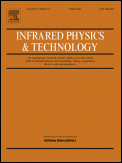
INFRARED PHYSICS & TECHNOLOGY
Driving Multi-disciplinary Collaboration in Infrared ScienceINFRARED PHYSICS & TECHNOLOGY, published by Elsevier, stands at the forefront of research in the fields of atomic and molecular physics, materials science, and condensed matter physics. With an impressive impact factor reflected in its Q2 quartile ranking across multiple categories, this journal serves as a key platform for disseminating high-quality peer-reviewed articles that advance understanding of infrared phenomena and their applications. As an essential resource from 1994 to 2024, it contributes significantly to the ongoing dialogue within the scientific community, providing researchers, professionals, and students with cutting-edge insights into electronic, optical, and magnetic materials. Although not an open access journal, its articles are widely disseminated and recounted in major databases, ensuring its pivotal role in the advancement of both theoretical and applied physics. Located in the vibrant academic hub of Amsterdam, the journal encourages innovative research that drives multi-disciplinary studies and fosters collaboration among scientists globally.
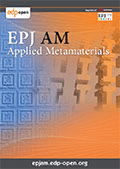
EPJ Applied Metamaterials
Transforming Ideas into Applications in MetamaterialsEPJ Applied Metamaterials, published by EDP SCIENCES S A, is a leading open-access journal dedicated to the dynamic field of metamaterials and their applications in various domains of physics and engineering. Since its inception in 2014, this journal has provided a vital platform for researchers to share innovative findings and advancements, facilitating the widespread dissemination of knowledge in Condensed Matter Physics, Materials Science, and Mechanics of Materials. With an impressive trajectory towards becoming a significant resource for academia and industry alike, EPJ Applied Metamaterials has achieved a commendable Q3 ranking in relevant categories according to the 2023 metrics, indicating its increasing impact within the scientific community. The journal is committed to fostering open dialogue and collaboration through its open-access model, ensuring that all research is freely accessible to a global audience. Scholars, professionals, and students alike are invited to contribute to this evolving field, harnessing the journal as a means to influence both theoretical and applied metamaterial research.

APPLIED COMPUTATIONAL ELECTROMAGNETICS SOCIETY JOURNAL
Advancing the frontiers of computational electromagnetics.Applied Computational Electromagnetics Society Journal, published by the Applied Computational Electromagnetics Society, serves as a crucial resource for researchers and professionals in the fields of Astronomy and Astrophysics as well as Electrical and Electronic Engineering. With a publication history spanning over three decades, this journal has established itself as a prominent platform for disseminating innovative research and advancements in computational electromagnetics. Offering insights into both theoretical and practical applications, the journal has been categorized in the Q3 and Q4 quartiles in its respective fields for 2023, ranking #61 out of 90 and #557 out of 797 in Scopus' percentile ranks. Researchers and students will find value in its comprehensive exploration of topics, making it essential reading for those engaged in electromagnetic theory, computational methods, and their applications in modern technology. Although not an open-access journal, its contributions remain pivotal in advancing knowledge and fostering collaboration in the electromagnetic community.
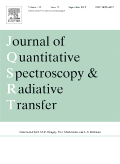
JOURNAL OF QUANTITATIVE SPECTROSCOPY & RADIATIVE TRANSFER
Pioneering innovative methodologies in radiative transfer.JOURNAL OF QUANTITATIVE SPECTROSCOPY & RADIATIVE TRANSFER is a prestigious academic journal published by PERGAMON-ELSEVIER SCIENCE LTD that serves as a leading forum for advancements in the fields of atomic and molecular physics, optics, and spectroscopy. With a commitment to publishing high-quality research since its inception in 1961, this journal has consistently contributed significant insights, furthering our understanding of the interactions between light and matter. Currently holding a Q2 ranking in Atomic and Molecular Physics and Optics, and Q1 in Radiation, this journal ensures a robust platform for researchers aiming to disseminate their findings and collaborate in this evolving field. With rigorous peer-review processes and a strong emphasis on quantitative methodologies, it is ideal for both emerging scholars and established professionals alike. Although it does not offer Open Access options, the journal remains an essential resource for anyone engaged in the rapidly advancing domains of quantitative spectroscopy and radiation studies.
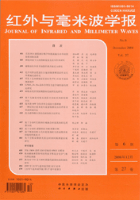
JOURNAL OF INFRARED AND MILLIMETER WAVES
Fostering Global Collaboration in Optical StudiesJOURNAL OF INFRARED AND MILLIMETER WAVES is a pivotal peer-reviewed journal published by SCIENCE PRESS, dedicated to advancing research in the fields of atomic and molecular physics as well as optics. With an ISSN of 1001-9014, this journal has established itself as an open-access platform since 2001, facilitating the dissemination of high-quality research findings to a global audience. The journal serves as a crucial resource for researchers, professionals, and students alike, spanning a converged period from 1991 to 2024. While currently positioned in Quartile 4 within its respective category, and ranked #184 out of 224 in Scopus for its impact in atomic and molecular physics, the journal remains committed to promoting innovative studies and methodologies in the underrepresented yet vital area of infrared and millimeter wave technologies. Based in Beijing, China, the journal seeks to attract cutting-edge research that explores new horizons in both theoretical and experimental domains, thereby contributing to the broader scientific community and fostering collaboration among scholars worldwide.

Advances in Radio Science
Advancing Knowledge in Electrical EngineeringAdvances in Radio Science, published by COPERNICUS GESELLSCHAFT MBH, is a leading open-access journal established in 2003, dedicated to the rapid dissemination of high-quality research in the field of radio science, particularly focusing on advancements in electrical and electronic engineering. With an ISSN of 1684-9965 and an E-ISSN of 1684-9973, this journal is indexed and provides an avenue for researchers to contribute to the latest developments and innovations within the domain. Despite its current Q4 ranking in the Electrical and Electronic Engineering category, its commitment to open access ensures that all published articles are freely available to a global audience, fostering collaboration and knowledge sharing among engineers, researchers, and students alike. Situated in Göttingen, Germany, the journal continues to evolve and expand its reach, with content converging until 2024, emphasizing its relevance in a rapidly changing technological landscape. Whether you're a seasoned researcher or an emerging scholar, Advances in Radio Science invites you to explore the frontiers of radio science and contribute to its growing body of knowledge.
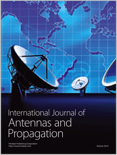
International Journal of Antennas and Propagation
Bridging theory and practice in antenna design.The International Journal of Antennas and Propagation, published by HINDAWI LTD, serves as a vital resource in the field of Electrical and Electronic Engineering, focusing specifically on advancements in antenna technology and propagation mechanisms. With an impact factor that reflects its academic rigor and relevance, this Open Access journal has been inviting submissions since 2007, ensuring that groundbreaking research is accessible to a global audience. Based in Egypt and distributed worldwide, the journal ranks in the Q3 category for Electrical and Electronic Engineering, situating it among the notable platforms for researchers seeking to disseminate their findings or stay abreast of the latest developments. It encompasses a wide scope, welcoming contributions that span theoretical studies, design innovations, and experimental validations, thereby fostering a comprehensive understanding of the subject. As it converges through the years from 2010 to 2024, the International Journal of Antennas and Propagation is a cornerstone for both emerging scholars and seasoned professionals aiming to enhance their knowledge and contribute to this dynamic field.
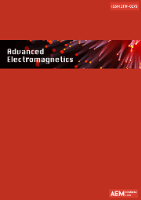
Advanced Electromagnetics
Driving Progress through Open Access Electromagnetic ResearchAdvanced Electromagnetics, published by ADVANCED ELECTROMAGNETICS, GEEPS-SUPELEC, is an esteemed open access journal dedicated to the rapidly evolving fields of electrical and electronic engineering, as well as materials science, encompassing electronic, optical, and magnetic materials. With an ISSN of 2119-0275 and an established presence since 2012, the journal facilitates the dissemination of high-quality research and advancements, making substantial contributions to the scientific community. Operating from France, the journal proudly holds a Q3 quartile ranking in Electrical and Electronic Engineering for 2023, alongside rankings in Radiation and Electronic Materials. With a commitment to fostering innovation and interdisciplinary collaboration, Advanced Electromagnetics appeals to a broad audience of researchers, professionals, and students, encouraging them to share work that propels the field forward. Enjoy the seamless accessibility of research articles under an Open Access model, allowing for widespread dissemination and engagement with cutting-edge advancements in electromagnetics.
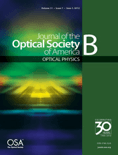
JOURNAL OF THE OPTICAL SOCIETY OF AMERICA B-OPTICAL PHYSICS
Connecting Researchers to the Heart of Optical ScienceJOURNAL OF THE OPTICAL SOCIETY OF AMERICA B-OPTICAL PHYSICS, published by Optica Publishing Group, serves as a leading platform for groundbreaking research in the fields of optical physics, atomic and molecular physics, and statistical and nonlinear physics. With an ISSN of 0740-3224 and an E-ISSN of 1520-8540, this esteemed journal has been in circulation since 1984 and is dedicated to advancing the understanding of optical phenomena and related technologies. It holds a commendable position in the academic community, with a 2023 Scopus ranking reflecting its significance—placing it in the top quartile for both Atomic and Molecular Physics and Statistical and Nonlinear Physics. Although it is not an open-access publication, it provides extensive access options to ensure that research is disseminated effectively within the scientific community. This journal is instrumental for researchers, professionals, and students alike, aiming to keep them informed of the latest advancements and trends in optical science. With a convergence of expertise and innovation, JOSA B continues to play a pivotal role in shaping the future of optical research.
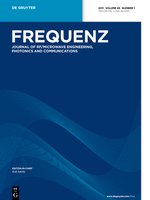
FREQUENZ
Fostering Excellence in Engineering ScholarshipFREQUENZ is a prestigious academic journal published by Walter de Gruyter GmbH, focusing on the dynamic field of Electrical and Electronic Engineering. Established in 1949, this journal has a long-standing tradition of disseminating high-quality research and developments within the engineering community. With an ISSN of 0016-1136 and an E-ISSN of 2191-6349, it offers a well-rounded platform for both theoretical and practical advancements in electrical and electronic technologies. The journal is indexed in Scopus, holding a rank of #470 out of 797 in its category, placing it in the 41st percentile, which highlights its relevance and impact within the profession. Although not open access, FREQUENZ remains a vital resource for researchers, professionals, and students seeking to stay abreast of the latest innovations and scholarly discussions in the field. The journal's commitment to quality and its significant contribution to the advancement of knowledge represent invaluable assets in supporting the growth of the engineering community.